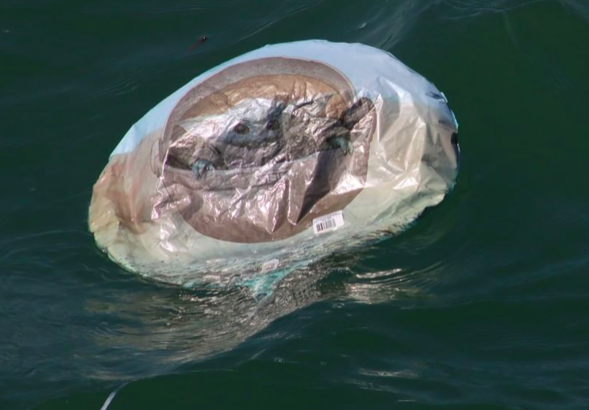Don’t Release Your Balloons!

Here at Cape May Whale Watch and Research Center we participate in the Clean Ocean Initiative. Each time marine debris is spotted during the cruise we collect it and record the day, weather conditions, as well as take a picture of the debris. Balloons are our most collected piece of debris. It is important to record this data to influence policies regarding plastic pollution.
Balloons are a danger to wildlife due to the strings that can entangle species or mistake it for food and then wind up ingesting it. The balloon blocks the species digestive system which leads to starvation. An example of this is that sea turtles commonly mistake a balloon for their natural prey, the jellyfish. One other issue is that balloons also take years to break down, allowing it plenty of time to travel and endanger an ecosystem (Balloons Blow, 2022). The two most common types of balloons are Mylar (foil) made of plastics and latex made of liquid rubber. Mylar balloons are known to burst in the atmosphere, creating smaller pieces that can float on the surface of the ocean. Algae and marine microbes can also coat the plastic, once again confusing a marine species diet (O’Brein and Brines, 2020).
There are several ways you can help prevent balloon debris and the main way is to not buy them! Or if you do buy them then please be sure to take them down after the event and properly dispose of them. The release of balloons for an event is littering and state laws should encourage individuals not to do this to prevent “balloon” pollution. In sum, plastic pollution is a major environmental issue and challenge.
You can help by downloading the Marine Debris Tracker app and report what litter you collect, OR you can JOIN our Clean Ocean Initiative! If you are interested in collecting data on an ecotourism vessel, contact us by calling (609)-898-0055!
-Olivia Hogan, Intern at Cape May Whale Watch and Research Center
Eckerd College ’22
References:
Balloons Blow (2022). Impacts on Wildlife and the Environment. Balloons Blow, INC. https://balloonsblow.org/impacts-on-wildlife-and-environment/
O’Brein and Brines. (2020). Balloon releases have deadly consequences- we’re helping citizens map them. The Conservation. https://theconversation.com/balloon-releases-have-deadly-consequences-were-helping-citizen-scientists-map-them-129321


